Case Study 3: Drakes Estero

Background: The National Park Service (NPS) is the entity responsible for leasing land within Drakes Estero for aquaculture, which has been ongoing since the 1930s. Recently, NPS decided not to renew the last remaining 1,000 acre lease that was set to expire in 2012. This action by the NPS actualized Drakes Estero’s 1976 designation as a wilderness area under the Wilderness Act and kickstarted a massive restoration effort in 2016 to return the Estero to a more natural state by removing over 3.8 million pounds of derelict mariculture gear (i.e., oyster racks, pressure-treated wood, plastic). This passive restoration occurred in three steps:
1) an excavator on a floating barge was used to remove the wooden oyster rack infrastructure.
2) a custom-designed excavator bucket was used to remove debris from the benthos in areas without eelgrass.
3) in areas with eelgrass, debris was hand-picked by SCUBA divers [1]. Success was measured as “meeting the 1.2:1 mitigation ratio.”
Outcomes: Overall, the passive restoration was hugely successful in minimizing impacts and facilitating natural eelgrass recovery (see images below). Impacts were limited to the footprint of the project area and the impact to eelgrass was far below what was permitted (2390 m2 or 25,730 ft2 ) at only 353 m2 (3,803 ft2 ) [1]. The required mitigation ratio was 1.2:1 or an area of 424 m2 (4,564 ft2 ) and by 2019, eelgrass cover increased 249% or 1057 m2 (11,376 ft2 ) [2]. Prior to restoration, eelgrass growth was inhibited by the effects of mariculture debris, mainly through chronic shading and disturbance. Thus, by removing the debris, eelgrass was able to naturally recover into the area.
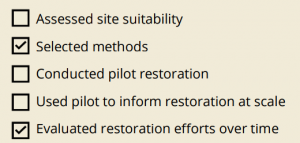
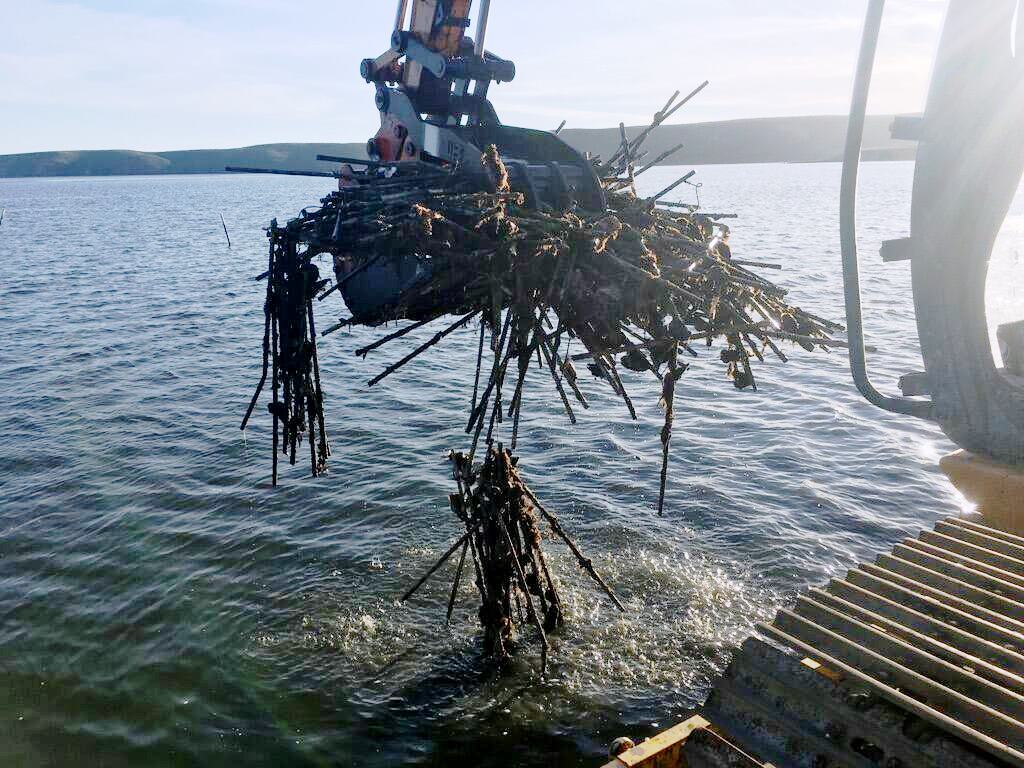
Excavator removing mariculture debris from the estuary A. Photos: NPS.
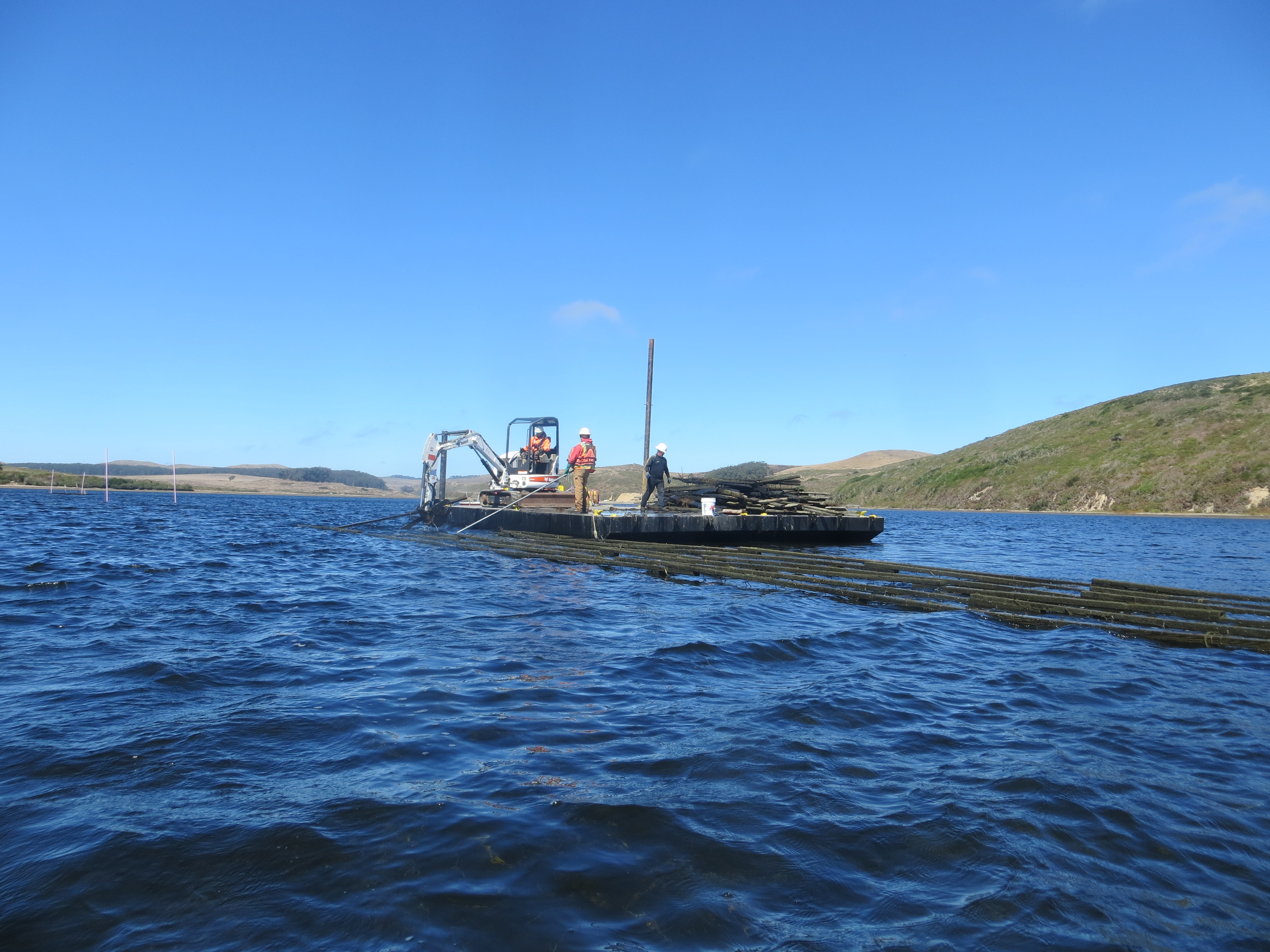
Excavator removing mariculture debris from the estuary B. Photos: NPS.
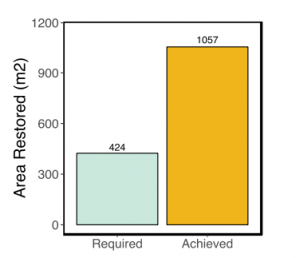
To meet the required mitigation ratio of 1.2:1, 424 m2 of eelgrass habitat needed to be restored (‘Required’). By 2019, 1057 m2 of eelgrass habitat was restored (‘Achieved’)—thus, this restoration was
considered a great success.
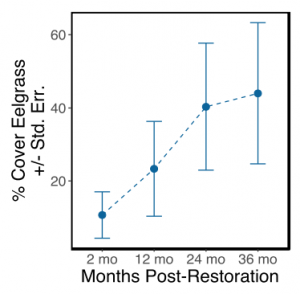
Cover has been steadily increasing over the past 3 years.
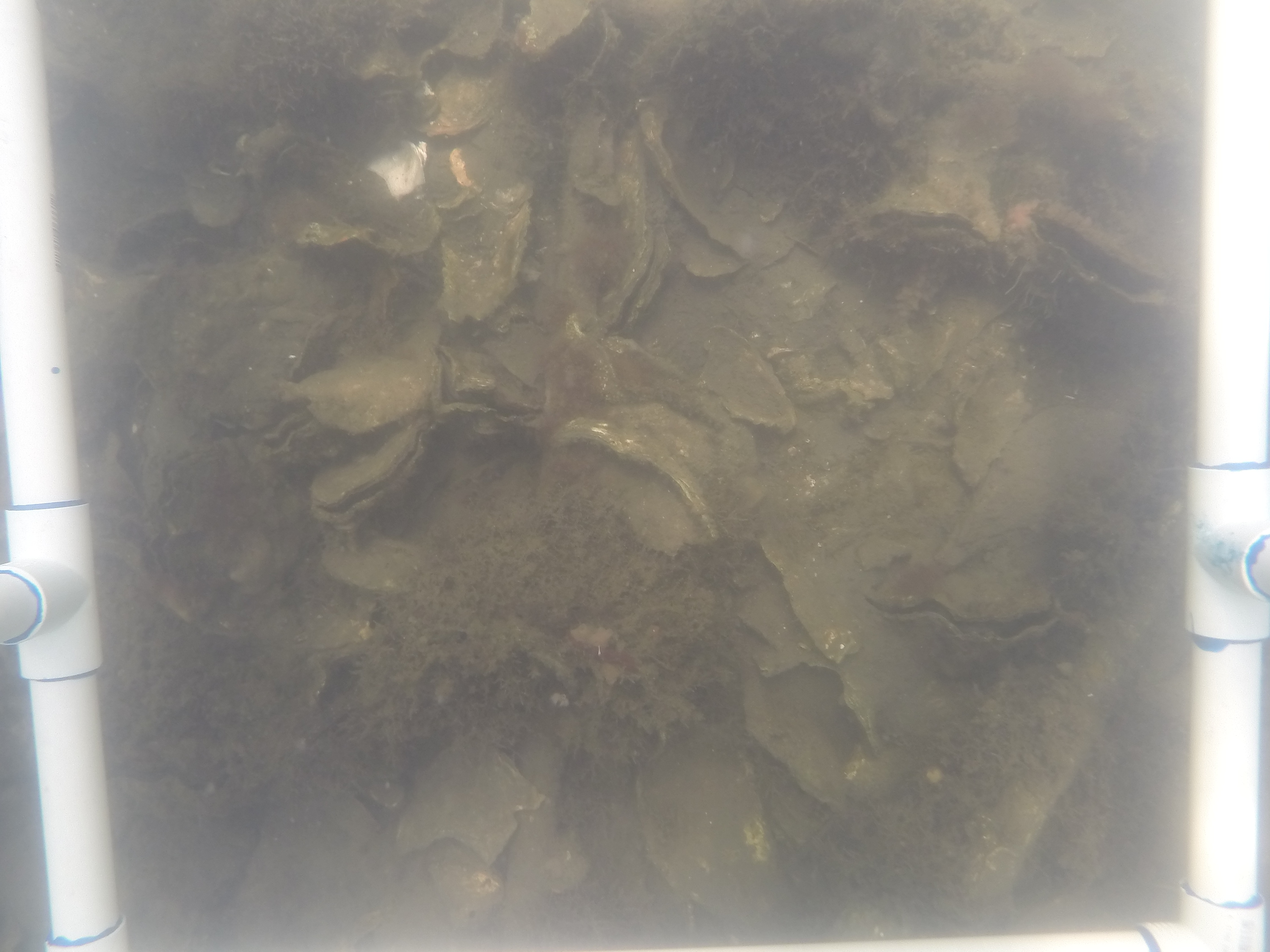
Before photo quadrats from a single plot surveyed in 2016. Photos: NPS.
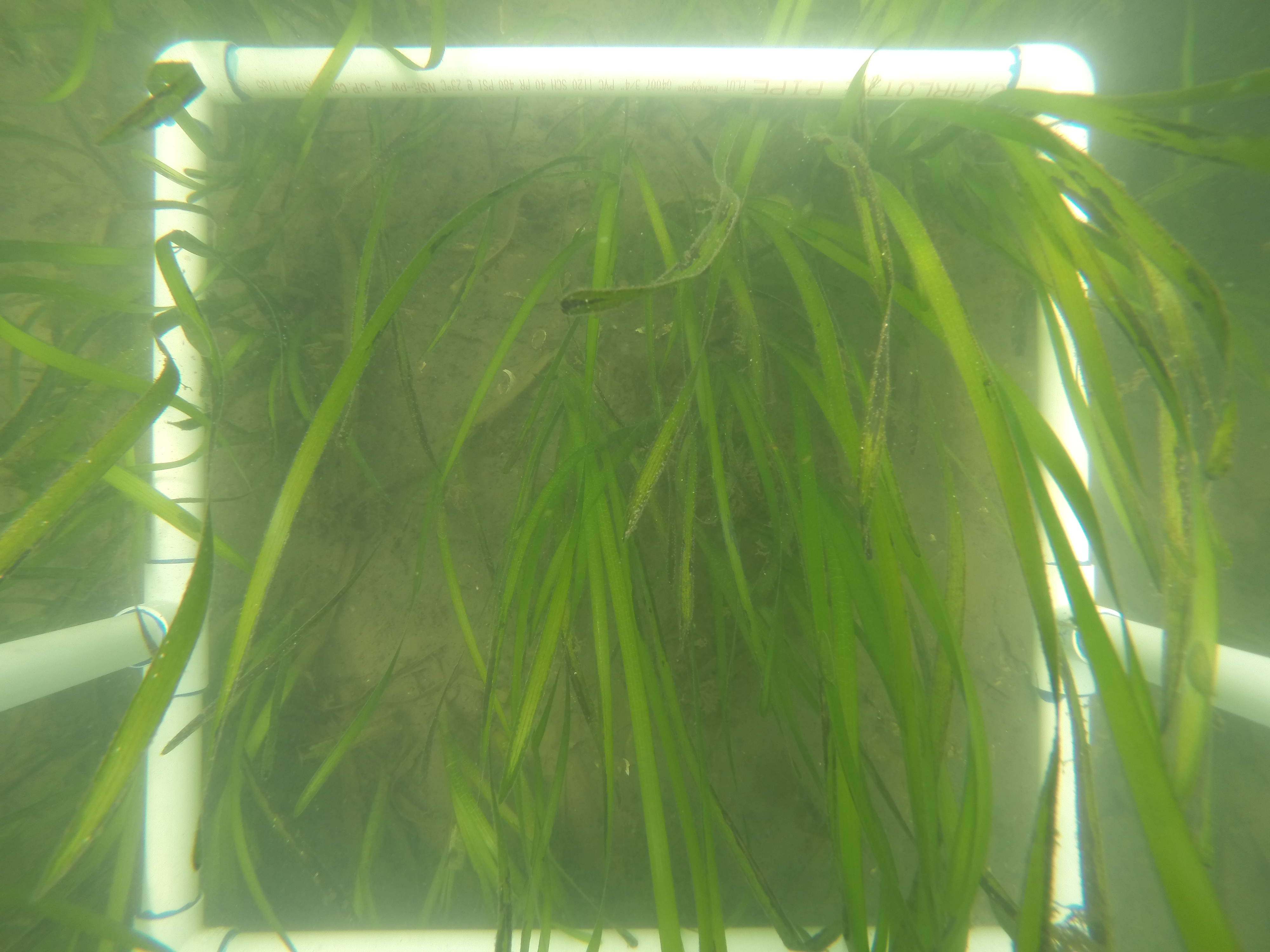
After photo quadrats from a single plot surveyed in 2019. Photos: NPS.
Contact for Project: Dr. Ben Becker; ben_becker@nps.gov
References:
1. Becker et al. 2017. Drakes Estero Restoration Project Eelgrass Monitoring report: Pre, Post, and 1 Year Monitoring: August 2016-October 2017.
2. Becker et al. 2020. Drakes Estero Restoration Project Eelgrass Monitoring Report: Year 3. Report to satisfy permitting requirement for California Coastal Commission, National Marine Fisheries Service, US Army Corp of Engineers, and the San Francisco Regional Water Quality Control Board.
